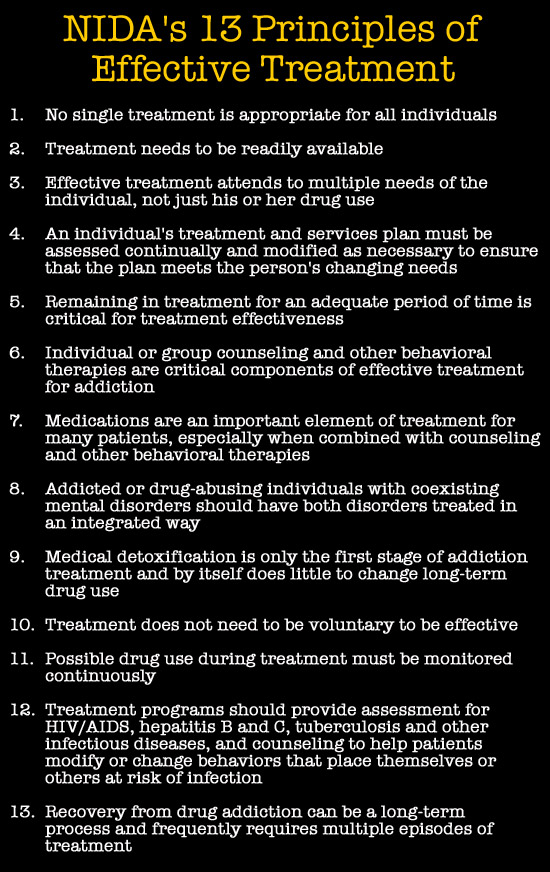The therapist can mention that the body operates fairly efficiently to rid itself of moderate amounts of psychedelic substances. Nevertheless, extreme use can harm organs and their communicating functions to the point of adding to major health issues, consisting of cardiac and pulmonary effects, weight management difficulties, and neurological and mental disorders, to name a few.
Again, the customer's interpretation of this tradeoff may differ thoroughly from the therapist's, so the therapist steps in most efficiently when equipped with both an open mind and the capability to assert clear, accurate information. Likewise, considering that clients are rather diverse in their opinions and analyses of the threats and advantages of substance use due to psychoeducation about drug impacts, the therapist remains mindful and responsive to the individual customer's point of view and cultural norms (abstinence as a part of treatment is most realistic for which of the following types of addiction?).
Even when the customer acknowledges the dangerous nature of compound use, the customer for whom compound use issues have actually emerged in therapy also typically expresses some wish to continuing use to acquire the benefits regardless of the dangers, even substantial ones. A psychoeducational position permits the therapist to remain more neutral while still prompting examination of various angles on the topic.
The body has natural systems for acquiring reward and decreasing damage from interactions with the environment, consisting of the intake of exogenous psychoactive substances. Together these 2 sets of biological functions reinforce the possibility that a person will continue using drugs or alcohol. The therapist generally wants to interact that if changes caused in the body by drugs are preserved over a long period of time by repeated substance abuse, the potential for harmful effects continues to increase.

However, the fast actions and blissful impacts of drugs with high dependency prospective supply strong satisfaction that can eclipse the user's interests in non-drug activities and awareness of delayed costs of substance use. Results like tolerance and withdrawal can stimulate the user to participate in more frequent administration of greater amounts of drugs.
All about What Constitutes Successful Treatment Addiction
Therapists can help substance utilizing clients to recognize the attributes of withdrawal, tolerance and dependence. Substance withdrawal. Regarding withdrawal, some customers might not be mindful that specific signs they experience are attributable to the chemicals they are ingesting. Therapists can assist inform such clients to the symptoms generally related to the particular drugs the customer has utilized (or is interested in using).
Other customers are acutely familiar with their substance withdrawal signs, but say they have actually discovered to cope with them or do not think there is much they can do about them. Still others think they are amusing, all just part of a great night on the town. Whatever the customer's viewpoint, the therapist encourages the client to elaborate, and then to consider possible interventions to resolve the client's own signs.
With respect to tolerance, the therapist notifies the customer that even if the user's experience of a drug's results is diminished as tolerance establishes, it doesn't indicate the prospective or actual damage is decreased. In fact, while tolerance does not guarantee problems, it might well increase the seriousness of an addicting disorder, specifically face to faces who are genetically, medically, or mentally susceptible.
Some clients who use substances plainly take pride in their high tolerance for their drugs of option (why isnt addiction treatment funded). Trying to encourage a client this is risky will probably just raise resistance. However a psychoeducational intervention helps with equivalent consideration of various perspectives on the exact same topic, consisting of awareness of reasons to feel casual or smug as well as reasons to be concerned about clients' reported abilities to handle themselves when intoxicated.
Addiction. Substance dependence, a term familiar to readers of the DSM-IV, was often corresponded with dependency, however the term "Substance Dependence" was eliminated from the DSM-5, in efforts to streamline diagnose and simplify its explanation. The DSM-5 still describes "Substance-related and addicting conditions" in the general heading for the whole diagnostic category, while the seriousness of the disorder is now described in regards to the number of signs reported or exhibited by the client.
The Ultimate Guide To What Is The First Step Toward Getting Treatment For Alcohol Addiction?
First off there is great confusion in the public, the media, and even among researchers and experts about how to distinguish chemical dependency from typical, unproblematic compound usage. Terms, descriptions, and ramifications vary commonly across individuals utilizing them. The therapist models versatility through willingness to freely acknowledge different, even contrasting point of views as they arise.
Second, lots of substance users fear or frown at the label of addiction, and may have little desire to talk about or discover it. A benefit of a psychoeducational technique is the capacity to present product in an abstract or gotten rid of style, even with a specific statement that the information may or may not be relevant to the customer.

Customers may provide remarks about their own circumstances in action to learning generalized material, or they might absorb information the therapist shares without https://storage.googleapis.com/opiateaddictiontreatment/delraybeachflorida.ht verbalizing a response. The mindful therapist watches and listens for the client's nonverbal in addition to spoken reactions to psychoeducational material. A facial expression, a change in body posture, or a wordless sigh or groan each works as hints for the therapist to invite comment. Therapists can provide techniques and clarify procedures by which customers can actively participate in deliberate modification processes. Clients regularly take advantage of a therapist's assistance concerning identification and weighing of alternatives, selection from among choices, and application of new strategies through regular practice. Specifically since many individuals who fulfill criteria for compound use conditions have actually over-learned expectations of instant gratification, therapists also require to emphasize perseverance with the gradual, approximate nature of change.
A therapist can reinforce the client's commitment to choices to prevent relapse by producing alternative point of views and methods to promote much healthier coping activities. After clarifying potential barriers to treatment goals, the customer and therapist expand the regression avoidance strategy by defining brand-new ways of thinking of problems and issues, new methods for handling hard feelings and disruptive behaviors, and new ways for the client to occupy time.
Engaging clients in new recreation and helping them develop occupational choices is essential in planning to avoid relapse. Rewarding abstinence from compound use, both total and partial, and also enhancing options to consumption of drugs or alcohol are empirically supported methods for increasing motivation for change (Miller, 2006). Typical consider efficient therapies consist of enhancing a client's behavioral control abilities and altering reinforcement contingencies to incentivize abstaining (Carroll and Roundsaville, 2006).